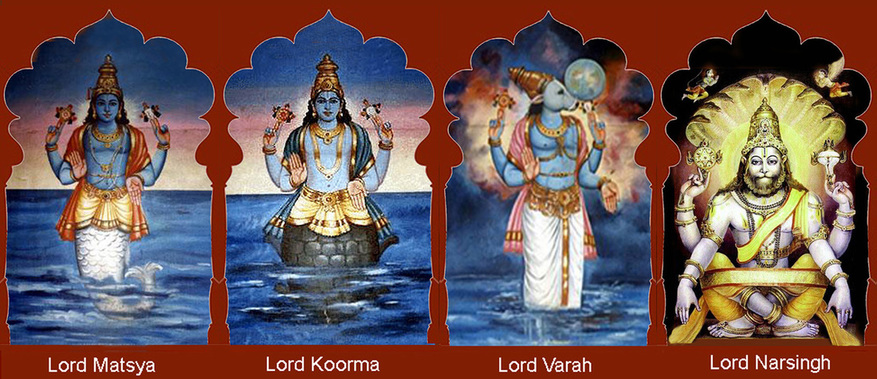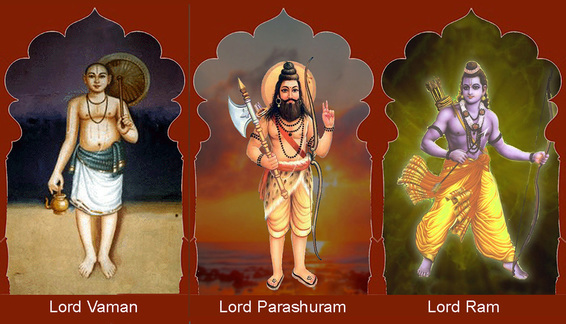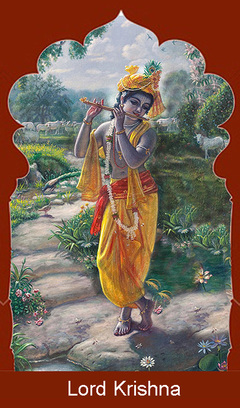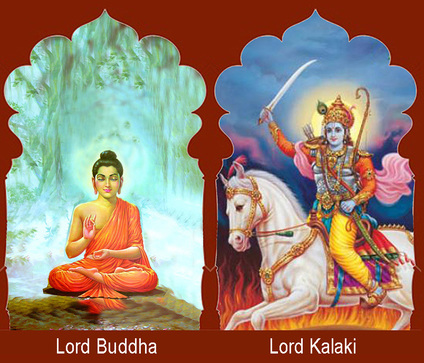Kaal — Vedic Time

According to our invaluable scriptures, mainly Mahabharata, Manu Smriti and Shrimad Bhagvatam etc. the concept of eternal and cyclical time is a very important aspect of philosophy.
Kaal (Devanagari: काल ISO15919: kāla ) has a few meanings in Sanskrit language. For various other meanings please refer to kaal .
In this article we will explore the cyclical aspect of time as mentioned in the Vedic scriptures.
This cyclical nature can be noticed in nature as recurring and predictable occurrences of day, night, weeks, months, years and seasons. There are other units of time as well like yugas (eras), and kalp (epochs) etc.
Vedic Cycle of Time
The time factor is repetitive. When one cycle of time ends then another cycle of time starts. Dissolution of the cosmos portends its re-creation. The completion of the process of dissolution marks the time of a new creation . So even though time ends, since it restarts, the time factor is everlasting.
The cosmic-egg ( Brahmand ) has three phases -
- creation (सृष्टि)
- continuance (स्थिति)
- dissolution (लय).
These three aspects of creation are governed by the Trinity –
Brahma, Vishnu and Shiva.

Then the entire universe merges into the infinite belly ( karnarnav ) of The Supreme God for a certain length of time. This state is called pralay . During this time there is no activity in the brahmand . After this again The Supreme God chooses another creator Brahma. Then the new creator Brahma creates the entire universe with the inspiration of The Supreme God .
On a much smaller scale this same cycle can be seen in our lives as well. We wake up after a long slumber, then all day long we are engaged in various activities. Again night falls and we sleep. At this time all our activities cease.
The concept of time in human years comes to us from Manu Smriti and Mahabharat revealed by Saint Ganita. In our daily lives time is measured as
- The smallest unit for measuring the time of earth is called nimesh (निमेष). The time taken for eyelids to blink once is called one nimesh
- 15 nimesh is known as one kashtha (काष्ठा)
- 30 kashtha is equivalent to one kala (कला)
- 30 kalas make a mahurta (महूर्त)
- 30 mahuoortas make up one ahorattra (अहोरात्र) – i.e. a day and night.
- 30 days and nights are called a month, which is divided into two fortnights. One fortnight is known as Krishna Paksha ( कृष्ण पक्ष) or waning lunar phase and the other is known as Shukla Paksha (शुक्ल पक्ष) or waxing lunar phase.
- Sum of 12 months is called a year of Earth.
The speed of time in celestial planets is exceedingly higher than that of the earth planet. For example, as written in Srimad Bhagavata (3.11.19) one celestial day is equivalent to the 360 years of earth or 1 human year is equal to one day and night of celestial beings ( swarg ke devata ).
Vishnu Puran depicts that the creation span is divided into Kalpas (कल्प), which is one daytime of Creator Lord Brahma.
- His day is called Uttarayan (उत्तरायण).
- Lord Brahma’s nighttime is equally long and is called Dakchhinayan (दक्षिणायण). One day along with one night of Creator Brahma is 8.58 trillion human years long.
- Brahma lives for 100 Brahma years called brahm varsh (ब्रह्म वर्ष) and is 309,173,760,000,000 human years long, where each year has 360 such days plus 360 nights.
- At the end of 100 years of Brahma the brahmand (cosmic-egg) is destroyed.
The entire time of a creation is divided into many cycles. Below is the description of all of these.
- Lord Brahma fulfills the role of creating the world of mobile and immobile creatures.
- Lord Vishnu then sustains it for a certain limit of time (read below for details).
- Lord Shiva finally annihilates the Brahmand . He is also known as Mahesh and Shankar.
Yug
The length of one smallest cycle of a creation is called an age or Yuga (युग). There are four yugas. According to Shrimad Bhagvat Mahapuran (3.11.19) one human year is equal to one celestial day plus one celestial night. The duration of each yuga in celestial years is
- Sat yug or Saty yug 4,800 celestial years
- Treta yug – 3,600 celestial years
- Dvapar yug – 2,400 celestial years
- Kali yug -1,200 celestial years
One year of celestial beings is equivalent to 360 years of earth. Therefore the duration of all the eras on earth in human terms is
- Sat yug – 4,800x 360 = 1,728,000 human years,
- Treta yug - 3,600x 360 = 1,296.000 human years,
- Dvapar yug - 2,400x 360 = 864,000 human years,
- Kali yuga - 1,200x 360 = 432,000 human years.
Vedic Cycles of time in human years
Sat yug = 1,728,000 years
Treta yug = 1,296,000 years
Dvapar yug = 864,000 years
Kali yug = 432,000 years
4 yug together (Chatur yug) = 4,320,000 years
1 Manvantar = 71 x Chatur yug = 306,720,000 years
1 Kalp = 14 x Manvantar = 4,294,080,000 years
Brahma 's Day = Kalp
Brahma ’s life is 100 Brahma's years
Brahma ’s life = 309,173,760,000,000 years
1 celestial day plus night = 1 human year
Sat Yug
According to our Puranas the first and foremost age is Satya yug (Devanagari: सत्ययुग ISO15919: satyayuga ) or Krita Yug (Devanagari: कृतयुग ISO15919: kr̥tayuga ) or frequently known as Sat yug (Devanagari: सतयुग ISO15919: satyuga ). The meaning of Sat in Sanskrit is Truth.
So this age is the “Age of Truth”. When the Satvik mode of Maya is predominant, every manifestation and action of every being is close to the purest sentiments led by divine virtues like love, sympathy, kindness, truthfulness, honesty etc. It is also referred to as the ‘Golden Age.’
Knowledge, meditation and penance are the most significant factors of this age. Every promise was honored even if it meant sacrificing one’s own life. King Harish Chandra was an example of this virtue who gave his entire kingdom to a hermit as king Harish Chandra promised him to offer anything according to his wish.
Our scriptures compare this age as a bull whose four legs represent the four pillars of dharma .
As mentioned earlier the duration of sat yug is 1,728,000 human years. People in this age have to perform austerity for thousands years. This is the only means to realize God.
These austerities are excessively severe. To attain the aim of life people would deprive their bodies of food and water etc. for prolonged periods of time. They would stay alone in a solitary forest with no dwelling place. They would withstand the torrents of rain, hail, wind, cold and fire etc. They endure all these hardships for thousands of years to attain the aim of life .
Every time sat yug begins on Sunday, 3rd day of waxing moon or Shukla paksh (Devanagari: शुक्ल पक्ष ISO15919: śukla pakṣa ) of Vaishakh. Vaishakh is the 2nd month of Hindu luni-solar calendar. This day is also honored as Akchhaya Triteeya .
The average life expectancy of an individual was approximately 100,000 human years. In Sat yug , humans did not age, they didn't suffer any physical ailments or mental diseases like anger, passion, greed etc. The first four descents of Supreme God occurred in this era, namely, Lord Matsya, Lord Koorma, Lord Varah and Lord Narsingh.

Treta Yug
Treta yug (Devanagari: त्रेता युग ISO15919: tretā yuga ) is the second era out of four eras. The total duration of Treta yug is 1,296.000. This age is known as the silver age as in this era knowledge and spirituality is reduced to three-fourth. Although the Satvik mode of Maya is still high, there is a little mixture of Rajas mode of Maya . In other words dharma stands on four legs in Sat yug while in treta yug , it stands only on three legs of religion (i.e. purity, mercy and truth). Austerity, a pillar of religion collapses in this yuga .
People of this yug are truthful and perform all the religious ceremonies according to the instructions of the Vedas. In this yuga the entire human race is divided into four groups called varna .
In Treta yuga people in all four varna considered sincere adherence to their respective Vedic duties as a part of dharma . They would beget desired fruits by performing karma , by resolving to attain them and by making donations according to the rules mentioned in the Vedas.
The average life expectancy of a human in the Treta Yug was approximately 10,000 years. All the kshatriyas born in this yug were valiant, zealous, highly intelligent, pious, truthful, beautiful, suitable to be blessed, revered and the protectors of all people.
The chief method of emancipation in this era is yagya which means the ritualistic fire sacrifices. The average human age used to be 10,000 years and height reduces to around 30 – 50 feet. Knowledge was predominant in this age.
This age is famous for the fifth, sixth and seventh avatars (descents) of The Supreme God i.e. Lord Vaman, Lord Parashuram and Lord Ram.
The total length of this yug is three-fourth the duration of Sat yug i.e. 1,296,000 years.

Dvapar Yug
Dvapar Yug (Devanagari: द्वापर युग ISO15919: dvāpara yuga ) is also known as the bronze age.
Out of the four pillars of dharm only two pillars are left namely mercy and truth. The other two pillars of austerity and purity are shattered in this yug . People begin to lead luxurious lives. They are not as truthful as they are in Treta Yug .
Some people would perform yagya but those are for attaining material benefits.
The kings would seek advice of the learned scholars in order to maintain law and order in their kingdom. Brahmins would maintain modesty by observing and bestowing spiritual knowledge, restraint, meditation and perform yagya etc.
Average life expectancy in Dvapar yug is 1,000 years. Generally the people in this era were gallant, enthusiastic, and bold. The Dvapar yug lasts for 864,000 human years.
The only means of God realization is the selfless and sincere service of saints and devotion.
This age is famous for 8th avatar (descents) of The Supreme God is Shri Krishna.

Kali Yug
This is the contemporary era in which we are living.
The length of Kali yuga is 432,000 human years. Kali yuga started on February 17 in 3102 BC. The best teams of the scholars of astrology, from all over India, give the same figures of 3102 BC and publish it in the panchang (journal) every year.
This is the age of deterioration of spirituality and ethics and is referred to as the dark age or iron age. In Kali yuga out of the four pillars of dharm only truth is left, the other 3 legs of dharm are shattered. Truth is also deteriorating due to rampant irreligion manifested as passion, wrath, ego and intoxication etc.
Sage Markandeya reveals some prominent features of Kali yuga in the Mahabharata. Viz -
- There will be no chastity, honesty and truth in Kali yuga .
- The rulers will not provide protection to the subjects instead they will be considered dangerous and terrifying.
- Covetousness and rage will be common tendencies.
- People will slay each other without any justification.
- There will be no value in taking any oath in front of any one.
- Addiction to intoxicating drinks and drugs will become a common craze.
- The women will become morally more corrupt than men.
- The real saints will not be honored. Instead they will be ridiculed and insulted for their spiritual knowledge, simple life style and precious teachings.

A little over 5000 years ago, in the 12th canto of the Srimad Bhagavata Mahapurana, sage Veda Vyas wrote 15 predictions and prophecies about the dark times for the present Kali Yuga . Some of them are mentioned below. Despite the negative tone of these prophecies, we don't need to get disheartened. There is one bright spot for all of us, which is mentioned at the end.
1: ततश्चानुदिनम भा १२.२.१
tataścānudinama bhā 12.2.1
Religion, truthfulness, cleanliness, tolerance, kindness, duration of life, physical strength and memory will all diminish day by day because of the powerful influence of the age of Kali.
2: वित्तमेव कलौ भा १२.२.२
vittameva kalau bhā 12.2.2
In Kali Yuga , wealth alone will be considered the sign of a man’s good birth, proper behavior and fine qualities. And law and justice will be applied only on the basis of one’s power.
3: दाम्पत्येभिरुचिर भा १२.२.३
dāmpatyebhirucira bhā 12.2.3
"Men and women will live together merely because of superficial attraction". Success in business will depend on deceit. Womanliness and manliness will be judged according to one’s expertise in sex. A man will be known as a Brahmin not because they are performing the duties of Brahmin written in the Vedas but because of wearing The Sacred Thread ( Janeu ).
4: लिङ्गमेवाश्रमख्याता भा १२.२.४
liṅgamevāśramakhyātā bhā 12.2.4
"A person’s spiritual stature (e.g. saint, aspirant, accomplished devotee, scholar etc) will be ascertained merely according to external symbols" like kanthi (a special necklace), tilak (a mark on the forehead), saintly attire etc. Based on these external symbols people will change from one spiritual order to the other. A person’s propriety will be seriously questioned if he does not earn a good living. And one who is very clever at juggling words will be considered a learned scholar.
5: अनाध्यातैवासाधुत्वै भा १२.२.५
anādhyātaivāsādhutvai bhā 12.2.5
"A person will be called un-blessed if he does not have money, and hypocrisy will be accepted as virtue". Marriage will be arranged simply by verbal agreement; the bond of marriage would not need to be backed up by moral values and a proper Vedic ceremony. External cleanliness (for example a bath) will be considered sufficient. No attention will be paid to Godly-character, knowledge, purity of thought or way of living.
Lord Krishna foretold in Brahm Veivart Puran, “ Kali Yuga will be full of extreme hardships for people with ideals and values”.
Apart from this, Lord Krishna also declared in Shrimad Bhagvata Mahapurana, “Ganga! At the end of Kali yuga, when
1. there will be no significance of spiritual matters
2. there will be no morality, even in the houses of so called saints and Brahmins
3. there will be no trace of benevolence
then The Supreme God will descend as Kalaki to rectify the situation and bring back chastity in the world. That period of 10,000 years will be the golden time in Kali yuga . By the time the Kali yuga ends, the world is already like Sat yuga".
This age is famous for the ninth and tenth avatars (descents) of The Supreme God i.e. Lord Buddha and Lord Kalaki. Lord Kalaki will herald the Golden age.

Chatur Yug
One complete cycle of all these four ages is named as Chatur yug (Devanagari: चतुरयुग ISO15919: caturayuga ) or Maha yug ( Devanagari: महायुग ISO15919: mahāyuga ). The total span of Maha yuga is 4,320,000 human years.
Manvantar
71 cycles of Chatur yug make a Manvantar (Devanagari: मनवन्तर ISO15919: manavantara ).
Manu (Devanagari: मनु ISO15919: manu ) means first ancestor of human beings and antar means span of time. Descendants of Manu are called manushya (Devanagari: मनुष्य ISO15919: ISO15919: ) or humans. Manu is created by Brahma. In one day of the creator Brahma there are 14 Manus. Each Manu rules for one Manvantar which lasts for 306,720,000 human years. When one Manu dies Brahma chooses the next one. Thus altogether there are 14 Manvantaras governed by 14 different Manus. The end of the 7th Manvantar marks the mid-day of Brahma’s day.
The 6 previous Manus were -
- Swayambhu
- Svarocisa
- Uttama
- Tamasa
- Raivata and
- Caksusa
The seventh Manu, who is governing at present, Vaivasat and is the son of Vivaswan. So the name of present Manvantar is Vaivaswat Manvantar . According to Shrimad Bhagawat (4.30.49) Vaivaswat Manu has lived 27 Maha yugas (116,640,000 years) already and is in the Kali yuga of 28th Manvantar .
Kalpa
The Srimad Bhagvata Mahapuran (12.4. 2-6) asserts, cycle of 14 Manvantars makes a Kalp (Devanagari: कल्प ISO15919: kalpa ). That is one day of Brahma which equals 4,294,080,000 human years. A night of Brahma is also as long as his day time. The present Kalpa is called Varah Kalpa (Bhag. 3.11, 33,34,36).
After the end of the last kalpa in 100 years of Creator Brahma’s life, the final dissolution of the universe will happen. Brahm -Supreme God will rest for 100 Brahma years. After that Brahm -Supreme God reveals the world as it is. Thus the same cycle of creation starts.
Brahama's Life
Creator Brahma's age is 100 Brahma years or 72,000 Kalpas or 309,173,760,000,000 human years (approximately 309 trillion human years).
Parardha
50 Brahma years together are called parardh (Devanagari: परार्ध ISO15919: ). Parardh is 154,586,880,000,000 human years long.
Current age of the creation
As of 2015 AD of the Roman calendar, we are in the first day after the 50th birthday of creator Lord Brahma. In that first day we are in the 28th Kali yuga of the 7th Manvantar . 5,116 years of Kali yuga have already elapsed and 426,884 years still remain. Putting it all together this brahmand is a little over 154 trillion human years old and will last for another 154 trillion human years.
Calculating age of this creation
1 Parardha = 154,586,880,000,000
6 Manvantars = 6 * 306,720,000 = 1,840,320,000
27 Chaturyug = 27 * 4,320,000 = 116,640,000
1 Sat + 1 Treta + 1 Dvapar = 11,664,000
5116 years of Kali yuga = 5,116
--------------------------------
Age of this creation = 154,588,848,629,116
Remaining Time of this creation = 154,584,911,370,884